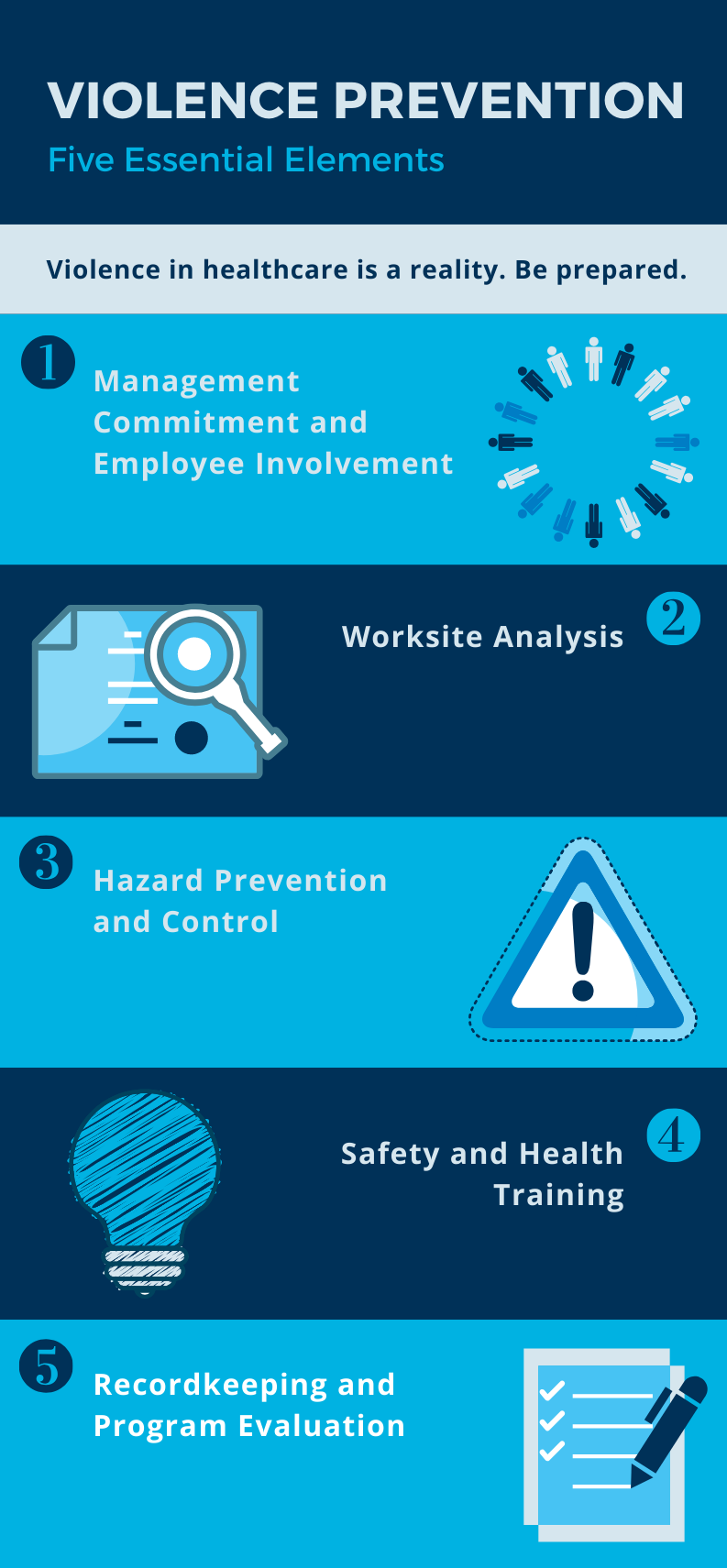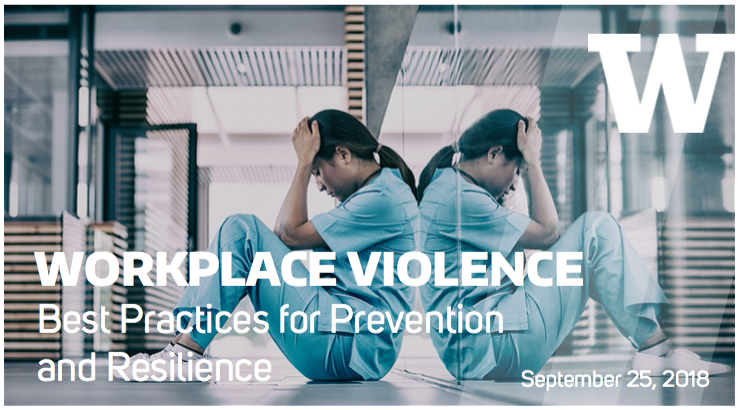The Role of Employee Training and Awareness in Enhancing Workplace Violence Prevention Initiatives Throughout Numerous Industries
The integration of staff member training and understanding right into work environment violence avoidance initiatives is progressively acknowledged as a basic facet of business security across diverse industries. Recognizing these subtleties may reveal strategies that can significantly boost safety and security methods and worker confidence in high-risk settings.
Importance of Educating Programs
In today's dynamic workplace, the value of training programs can not be overemphasized, particularly in the context of workplace physical violence avoidance. These programs function as a fundamental component in cultivating a safe and safe and secure work environment culture. By gearing up employees with the expertise and abilities required to determine, mitigate, and react to possible hazards, companies can promote an atmosphere that prioritizes safety and security and health.
Efficient training programs do more than just instruct; they equip workers to acknowledge indication of physical violence, understand the procedures for reporting incidents, and establish approaches to de-escalate prospective problems. Additionally, they infuse a sense of cumulative responsibility among team, motivating aggressive participation in keeping a safe office.
Investment in training not just boosts staff member awareness but likewise shows a company's commitment to securing its labor force. This aggressive method can cause reduced occurrences of office physical violence, lower absence, and boosted staff member morale. Eventually, detailed training programs are integral to establishing a resistant business culture that values safety and security and promotes a healthy and balanced work atmosphere, consequently lowering the danger of physical violence and its linked consequences.
Key Components of Effective Recognition
A detailed recognition program encompasses numerous essential components that are important for efficiently preventing office violence. Clear communication of plans and treatments associated to workplace violence is crucial. Staff members need to be notified about the company's position on physical violence and the details methods in position for reporting incidents.
Second, training sessions must include reasonable scenarios that workers may encounter. This sensible technique aids employees recognize advising indicators of potential violence and outfits them with the required skills to de-escalate tense scenarios. Third, promoting a helpful workplace society is crucial; workers should really feel empowered to speak out without concern of retaliation.
In addition, continuous education is necessary to maintain understanding fresh and relevant. Normal refresher training courses and updates on arising dangers can improve staff members' alertness and readiness. Finally, including responses devices permits workers to share their experiences and insights, which can lead to constant renovation of awareness initiatives. By incorporating these elements, companies can develop a durable structure for avoiding work environment violence, eventually adding to a safer and more efficient atmosphere for all workers.
Industry-Specific Training Methods
Effective workplace physical violence avoidance training should be tailored to the unique obstacles and threats dealt with by particular industries. For circumstances, medical care atmospheres require training that addresses the high likelihood of experiences with hostile individuals or site visitors. Programs ought to concentrate on de-escalation techniques, recognizing caution indicators of possible physical violence, and making certain team understand the value of reporting occurrences.
In comparison, retail setups may face different hazards, such as robbery or consumer disputes. Training in these settings should stress situational recognition, reaction methods throughout emergencies, and the value of protecting money and valuables.
Production and building and construction sectors offer their very own risks, frequently related to social disputes or hazardous working problems. Training in these markets should consist of methods for conflict resolution, advertising a culture of security, and encouraging open interaction among employees.
In addition, business offices may call for training focused on preventing harassment and bullying, promoting a respectful work environment society, and applying clear reporting mechanisms. Each market has to not only acknowledge its certain vulnerabilities however likewise adjust training materials to resonate with the labor force effectively, guaranteeing that staff members feel complete and equipped to deal with prospective violent situations.
Gauging Training Performance
Assessing the impact of workplace violence avoidance training is essential for making certain that staff members are effectively prepared to handle potential threats. Pre- and post-training studies can assess changes in worker knowledge, attitudes, and actions concerning workplace physical violence.
Additionally, functional evaluations, such as role-playing scenarios or simulations, can offer understandings right into how well workers apply learned skills in real-life scenarios. Checking occurrence reports before and after training can also act as an indication of effectiveness, as a reduction in occurrences may reflect better staff member preparedness.
Moreover, feedback from individuals must be methodically accumulated to recognize areas for improvement in training content and delivery. Performing follow-up examinations at routine periods aids receive recognition and reinforces training principles over time - california workplace violence prevention. By utilizing a detailed approach to gauging training effectiveness, organizations can ensure that their office violence prevention efforts foster a more secure environment and enhance overall worker health
Building a Society of Safety

Educating plays an essential function in this cultural shift. Regular, detailed training sessions inform staff members concerning recognizing warning indicators of office violence and the suitable reactions. Furthermore, encouraging open interaction enables staff members to voice worries without anxiety of vengeance, advertising collective duty here for safety and security.
Additionally, incorporating security into day-to-day operations makes sure that it ends up being a shared value as opposed to a mere conformity issue. This consists of routine safety drills, updates on policies, and responses systems view publisher site that involve workers in safety discussions and enhancements.
Ultimately, a robust culture of safety and security not only alleviates the dangers of office physical violence yet also enhances employee spirits and productivity. By promoting an atmosphere where safety is a fundamental concern, organizations can create resistant workplaces that sustain both individual wellness and collective success.
Final Thought
In verdict, staff member training and recognition are crucial components in the avoidance of office physical violence across different sectors. Efficient training programs, tailored to particular sector needs, enhance workers' capacity to acknowledge and respond to prospective dangers. By executing thorough recognition approaches and fostering a society of safety, companies can considerably reduce events of workplace physical violence and boost general worker morale. Dedication to ongoing training and assessment makes certain continual performance and versatility in attending to emerging difficulties within the office setting.

Normal, comprehensive training sessions enlighten employees regarding recognizing caution signs of office physical violence and the proper actions.In final thought, worker training and awareness click this site are essential elements in the prevention of office violence across numerous markets.